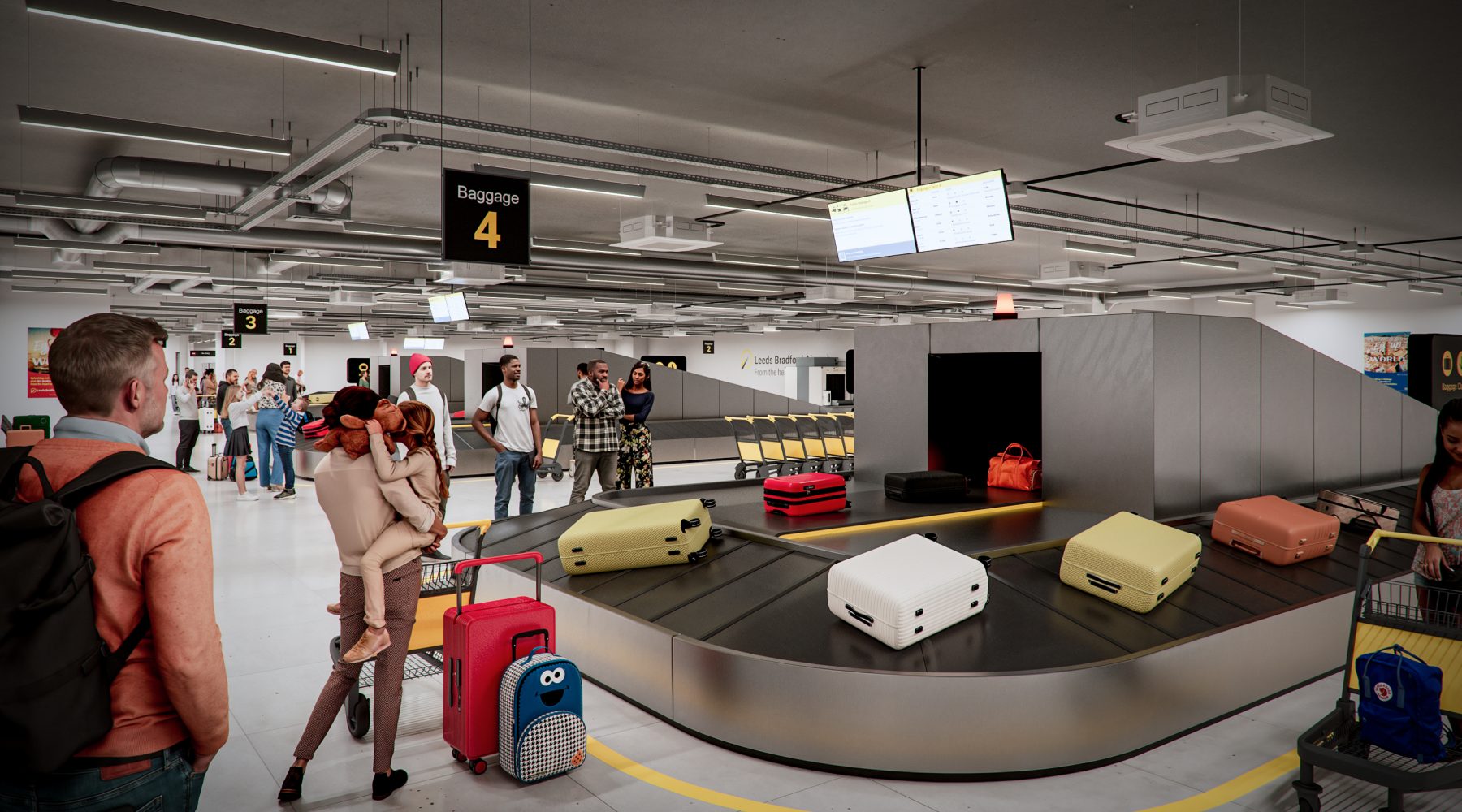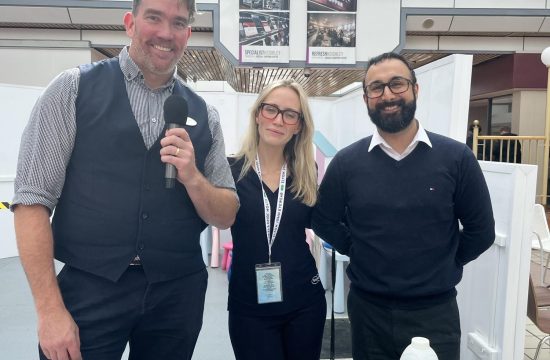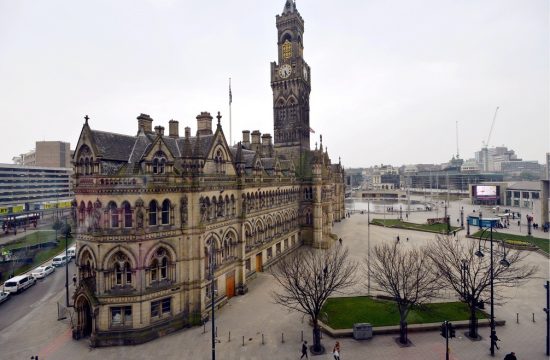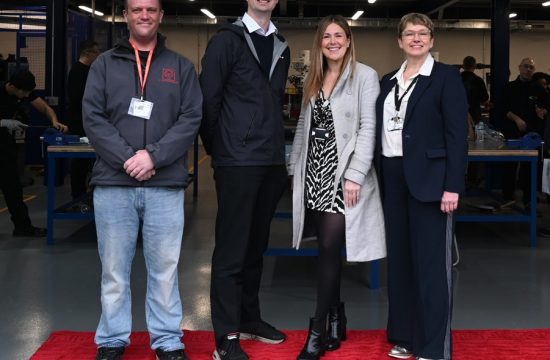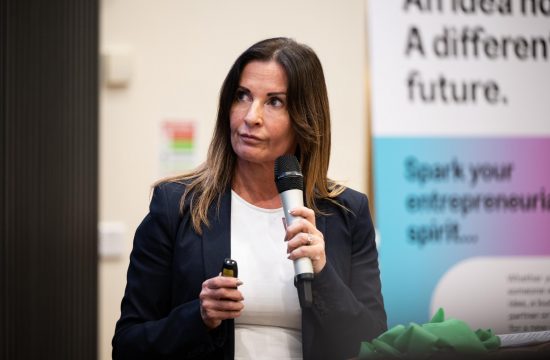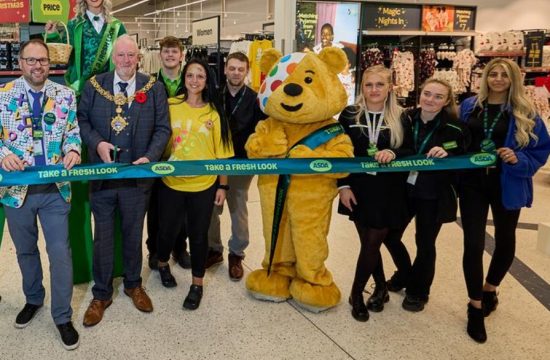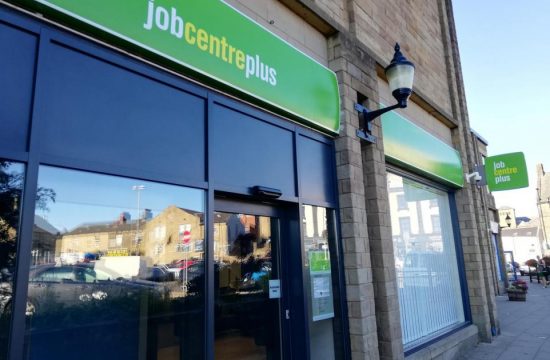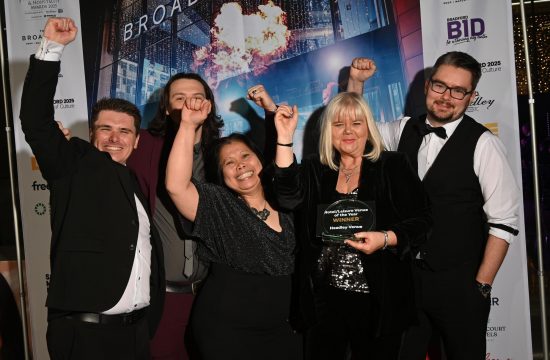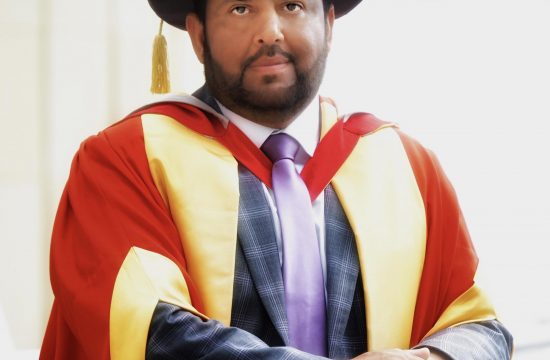When Vincent Hodder took over as CEO at Leeds Bradford Airport in January 2021 he found a business that was fundamentally stuck in the past.
By Annette McIntyre
“When I arrived in the middle of the pandemic into an empty airport it was like walking through the insides of an old world war two battleship,” he remembers. “It was dark, everything was painted dark grey, everything was constrained, small, there was no open space. There was nothing happening inside, all of a sudden it was closed. So it was a very odd experience.”
The fourth CEO in three years following the sale of LBA in 2017, it was clear to him and to the new shareholders that the airport had been underinvested in for more than 20 years.
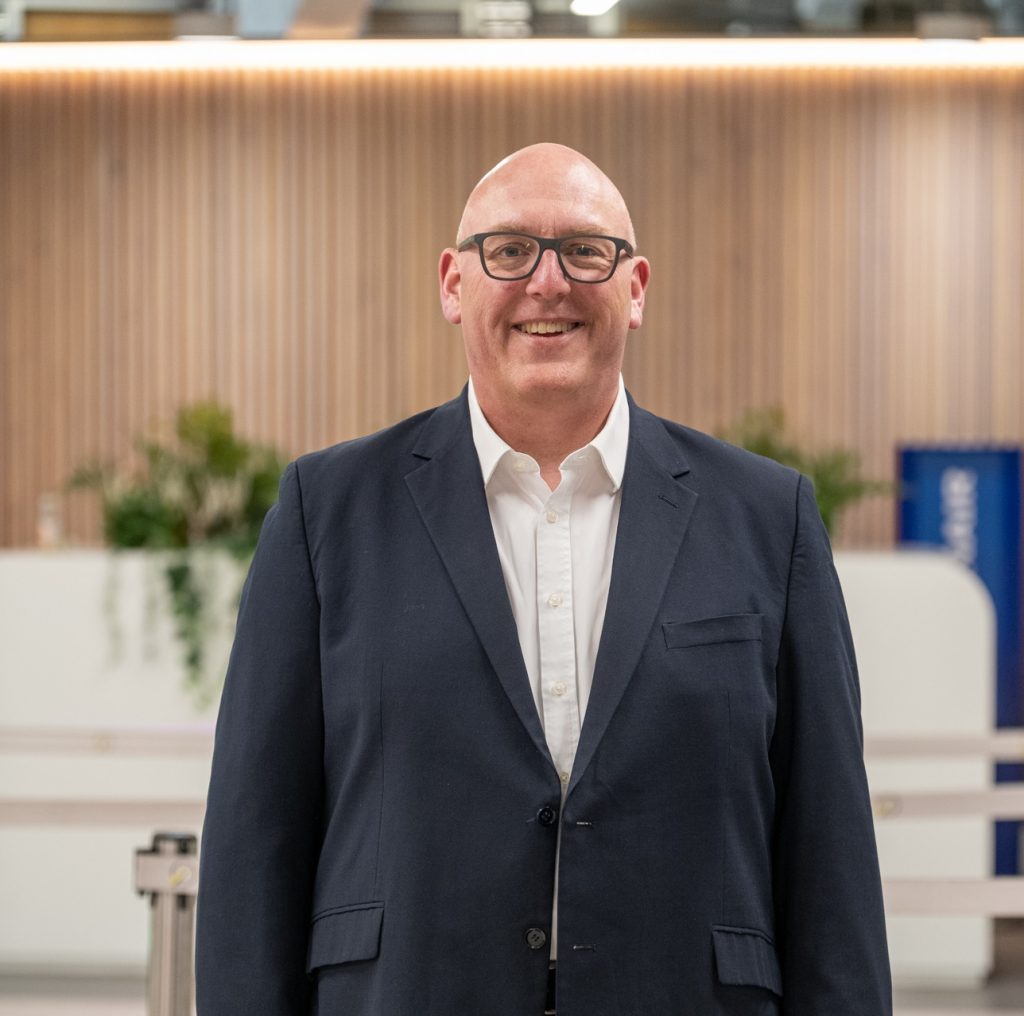
Vincent Hodder, CEO at Leeds Bradford Airport
“That’s underinvested in terms of its infrastructure development, underinvested in terms of customer experience, and underinvested in terms of staff, capability, development and career paths etc. It was just fundamentally stuck in the past. It wasn’t delivering a great experience for customers and wasn’t delivering a great experience for people who worked here,” he said.
Among the challenges he was given he was charged with improving the customer experience and improving the infrastructure to support future growth.
A planning application for a new terminal had already been submitted and this was approved by Leeds City Council in February 2021 – but it was referred to the Secretary of State for his consideration and stayed there for 11 months. It was during that delay that Mr Hodder began to look at a previous application for an extension to the terminal that had been given permission in 2019.
“We did some work and what we were able to understand is, if we were to take the approval that we already had but think creatively about how we use the space inside that extension differently to the way that it was originally envisioned, that would create the opportunity for us to do a complete end to end redesign of the existing terminal building. Upgrading, modernising, but more importantly, removing any of the bottlenecks that were leading to poor customer outcomes, poor employee outcomes, as well as poor commercial outcomes.”
“We had this time up our sleeves and we used it. By the time we got to the end of that process what we realised was that in a large number of the decision criteria what we would end up with by following plan b was actually better than what we would have got out of plan a, out of building a new terminal. Not in every respect, but in the vast majority, it actually provided a superior outcome than the new planning application.”
The decision was taken to go ahead with an extensive regeneration of the existing terminal. The more than £100 million project, now known as LBA:REGEN, aims to give the region “the airport that yorkshire deserves” and is designed to future proof LBA for years to come.
When the new application was called in by the Secretary of State in December 2021 LBA decided there was no point spending more money on it when there was already an alternative which would give just as good an outcome at significantly less than half the cost and which didn’t need further planning approval.

The project encompasses three phases of development.
“The first of those is the extension – which we are just in the final stages of completing – which sticks off the end of the existing terminal building. The second phase, which commences effectively as soon as the first phase ends, is the refurbishment and regeneration of the existing terminal building. And then in parallel with those two phases is the third element, which is the expansion of airfield infrastructure and provides additional aircraft parking spaces, to support the passenger growth that generates out of phase one and phase two,” Mr Hodder said.
At the moment the first phase is on track to be completed by May 21 – although that date is not set in stone. Phase two is expected to be completed by the end of 2026. Phase three will take until 2029 and will involve building 10 additional stands, at the rate of two a year.
It is hoped the transformation of the airport will lead to more flights and more destinations.
Mr Hodder says the figures show the demand is already there. Last year there were 13.2 million passenger trips from the whole of Yorkshire, with 4.2 million of those flying from LBA and the rest travelling from other airports.
Of those not flying from LBA 4.4 million trips were going to destinations served by LBA and on airlines that fly out of LBA.
“The single biggest expansion opportunity out of Leeds Bradford Airport is more of the same, not new routes – just more frequencies, better timings on the same routes that are operated today, on the airlines that are currently operated from LBA,” Mr Hodder said.
Another opportunity comes from the 2.5 million passengers who travel out of Yorkshire to destinations that are not served from LBA but which are reachable from there.
“We exist to serve the Yorkshire market and what the data appears to tell us is that we are not effectively serving the Yorkshire market. And so we should do better at meeting the needs of our local community,” Mr Hodder said.
The airport is aiming for seven million passengers per year by 2030 – increasing employment to about 3,600 direct jobs, with about 8,500 jobs indirectly supported.
“Total economic value – this is really the critical one – by 2030 will be up to £940 million a year, of gross value added. So that is a significant component of our regional economy being driven off the back of the activity of the airport,” he added.
The impact on the passenger experience will be unmistakable according to Mr Hodder who stressed: “It’s like coming from the middle ages into the 21st century. It’s such a fundamental difference that it’s almost incomprehensible.”
The new scheme will do away with existing problem areas – such as the arrivals escalator which cannot be used because its position to the right of the stairs makes it unsafe due to a potential bottleneck.
“If you had it the other way around – if you had the escalator on the left hand side and stairs on the right hand side this situation would not occur. It is a fundamental design flaw in the way that the airport was built,” Mr Hodder said.
He added: “We have a brand new arrivals area, we have more contact gates so that people can just walk in from the aircraft directly into the building, a larger queuing area, a larger border contingent, a larger baggage claim. All of it is on one level so there’s no requirement for lifts and stairs. It is just not comparable in any sense to what we currently have.
“And the departures experience by the end of 2026 will be a completely new experience. All of the bars and restaurants will be brand new. The layout of the interior of the airport is completely different. All of it is more modern, with better lifts, better air conditioning, better heating.
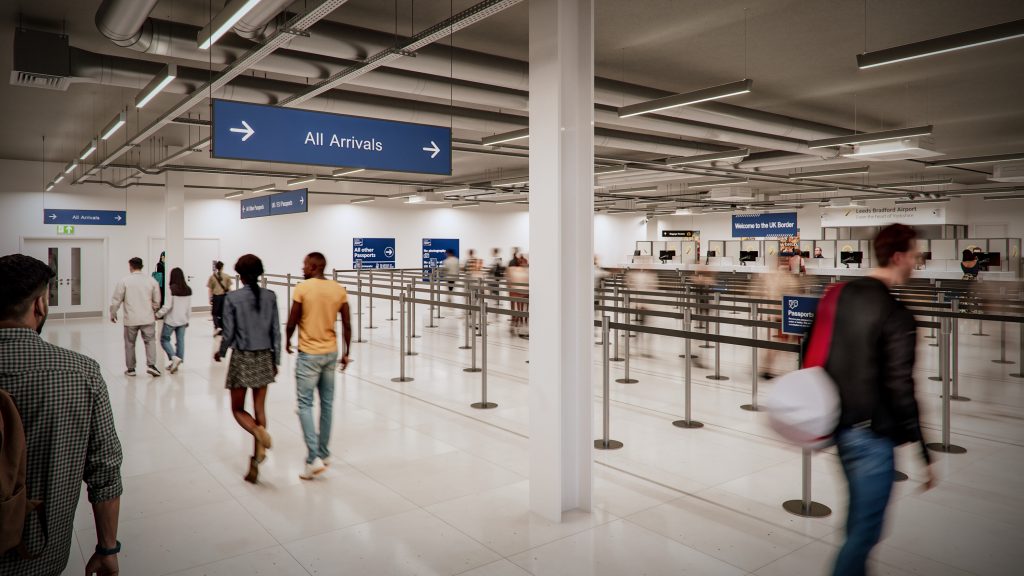
“You’ll arrive in what we are building at the moment, the new departures area in the new building, the entire top floor of the new building. It’s fundamentally a big open space with windows looking out over the airfield, giving passengers a massive increase in the level of passenger seating. It’s no longer like the interior of a battleship, it’s a big open spacious area. It’s no longer a battle to try and find a seat and then keep hold of that seat until your flight departs because there’s a lot more seating. We’re increasing the passenger throughput of the airport by 40 per cent – we are increasing the amount of seating in the airport by 83 per cent.”
He added: “I love that new departures area. I go into the new building two or three times a week and I still can’t get over that new departures area, the size and space and openness. It is just such a different experience at the airport compared to what we had before.”
Mr Hodder said: “When I first joined the business and mapped out the strategy I was in a unique situation that has never happened in my career before and will probably never happen again. I came into this role without having to run an operation. We were closed. And that gave me a lot of time to really think strategically about what do we want this airport to be and how are we going to do that.
“That started for us with putting the customer at the centre. But also a recognition that airports are not like other businesses. They are unique in the way that they form a relationship with their local community and local environment.
“I come from an airline background. In an airline your assets are by definition mobile. You can put an aircraft wherever you want, anywhere in the world. You can get it there in only a matter of hours. And so with an airline you are not tied to a place in the same way.
“Even things like supermarkets build locations all across the country. Each one of those locations is a separate part of an overall business.
“But this airport is, always has been, always will be in this location – permanently. Our customers, our employees, and our neighbours are the same people and so that was a bit of a revelation to me when I took on the role.
“It means we build our strategy around a core set of stakeholders. We want to deliver an outstanding customer experience – as in any business, an outstanding customer experience is your starting point. But in order to deliver an outstanding customer experience the thing that makes the difference is having staff who are engaged and motivated, proud to work in the business that they work in. We didn’t have that at the time and I feel like we do now. There’s been a material change in the culture and environment of working at Leeds Bradford Airport over the last four years.
“The third element is our neighbours, the key stakeholders. Even just in the last week we’ve held two community engagement events where we go out and meet with our neighbours, give an update on what the airport is doing, our plans for carbon reduction, our plans for noise reduction – so addressing the key concerns of our local communities.”
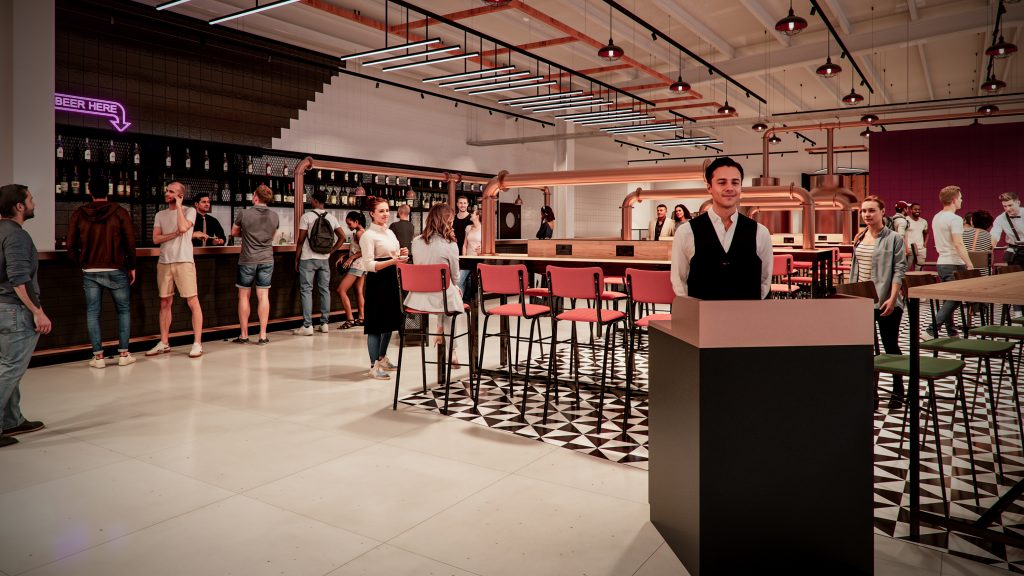
He stressed: “Delivering a better experience for the customer, a better environment for our workforce, and engaging with our stakeholders to grow in a more sustainable way. This is the core of what everything else that we do is all about.”



